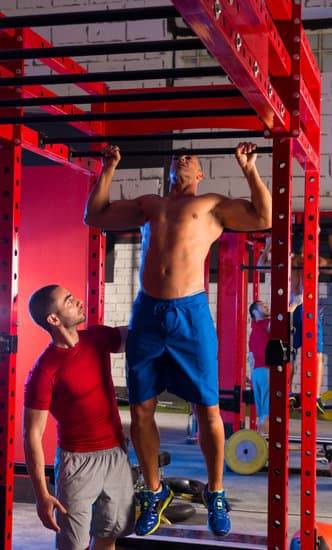Are you ready to transform your eating and exercise habits? Learn how to eat and exercise like a fitness model to achieve your fitness goals.
Whether you’re looking to tone up, build muscle, or simply adopt a healthier lifestyle, understanding the principles of a fitness model’s routine can help guide you on your journey. From setting the right fitness goals to incorporating flexibility and recovery, this article will provide you with essential tips and advice for embracing a fitness model lifestyle.
When it comes to eating and exercising like a fitness model, it’s all about creating a balanced approach that encompasses both nutrition and physical activity. By understanding the physique of a fitness model and the importance of macronutrients and micronutrients, you can begin to tailor your nutrition plan accordingly. Additionally, implementing specific exercises that target various muscle groups and designing an effective workout routine are crucial components of achieving a physique similar to that of a fitness model.
In this article, we’ll delve into the details of creating a well-rounded nutrition plan, meal prepping effectively, selecting the best exercises for your desired physique, designing an efficient workout routine that balances strength training and cardio, as well as tips for maintaining motivation and consistency. With valuable insights into the mental aspect of eating and exercising like a fitness model, this guide aims to empower readers to embrace this challenge with confidence.
So if you’re ready to elevate your fitness journey, let’s dive in.
Setting the Right Fitness Goals
Fitness models are known for their toned and sculpted bodies, which often serve as inspiration for individuals looking to improve their own physique. It’s important to understand that achieving a fitness model physique requires setting realistic and achievable fitness goals. This involves understanding the body composition and muscle definition that is typically associated with fitness models.
Body Composition
Fitness models generally have a low body fat percentage, typically in the range of 8-15%. In addition to low body fat, they also have well-defined muscles, especially in the abdominal area, arms, and legs. Understanding the ideal body composition of a fitness model can help individuals set specific goals for both fat loss and muscle gain.
Muscle Definition
A defining characteristic of fitness models is their muscular definition. This includes having well-defined abs, toned arms, and sculpted legs. Achieving this level of muscle definition requires targeted exercises aimed at specific muscle groups. By understanding the areas that need to be developed, individuals can set appropriate fitness goals and tailor their workout routines accordingly.
Once individuals have a clear understanding of what it takes to achieve a fitness model physique in terms of body composition and muscle definition, they can then set realistic short-term and long-term goals to work towards. This understanding will also help them design an effective nutrition plan and workout routine that aligns with these goals. Ultimately, setting the right fitness goals is the first step towards eating and exercising like a fitness model.
Creating a Balanced Nutrition Plan
Eating like a fitness model goes beyond just consuming low-calorie foods. It is essential to create a balanced nutrition plan that includes the right combination of macronutrients and micronutrients. Macronutrients, which include carbohydrates, protein, and fat, provide the body with energy and are crucial for muscle growth and repair. On the other hand, micronutrients such as vitamins and minerals play a vital role in various bodily functions and overall well-being.
When creating a nutrition plan, it’s important to understand the specific needs of your body and how different macronutrients can impact your fitness goals. For example, protein is essential for muscle recovery and growth, while healthy fats are necessary for hormone production and overall health. Carbohydrates provide energy for workouts and support recovery. By ensuring that your diet includes adequate amounts of each macronutrient, you can optimize your performance in the gym and promote overall physical wellness.
In addition to macronutrients, paying attention to micronutrients is equally important when eating like a fitness model. Micronutrients play a crucial role in supporting immune function, promoting bone health, and aiding in digestion.
Incorporating a variety of fruits, vegetables, whole grains, lean proteins, and healthy fats into your diet can help ensure that you are getting all the essential vitamins and minerals needed for optimal health. Creating a balanced nutrition plan that focuses on both macro – and micronutrients will not only support your fitness goals but also contribute to long-term wellness.
Meal Prep and Portion Control
When it comes to eating and exercising like a fitness model, maintaining a balanced nutrition plan is essential. One key aspect of this is meal prep and portion control. By preparing your meals in advance and controlling your portion sizes, you can stay on track with your nutrition and avoid unhealthy choices.
Here are some tips for effective meal prep and portion control when aiming to eat like a fitness model:
- Plan your meals: Take the time to sit down and plan out your meals for the week. This will help you make healthier choices and avoid last-minute unhealthy options.
- Choose nutrient-dense foods: Focus on including a variety of fruits, vegetables, lean proteins, whole grains, and healthy fats in your meals. These foods will provide the necessary nutrients to support your fitness goals.
- Use portion control containers: Invest in portion control containers or use measuring cups to ensure that you are not overeating. This will help you manage your calorie intake effectively.
In addition to meal prep and portion control, it’s important to be mindful of snacking habits. Instead of reaching for processed snacks, consider having healthy options such as nuts, Greek yogurt, or fresh fruit readily available for when hunger strikes.
By putting in the effort to plan and prepare nutritious meals while controlling your portions, you can better align with the eating habits of a fitness model. This disciplined approach to nutrition will complement your workout routine and help you achieve the physique you desire.
The Best Exercises for a Fitness Model Physique
When aiming to achieve a fitness model physique, it’s essential to incorporate targeted exercises that focus on specific muscle groups. While overall strength and conditioning are important, emphasizing certain areas of the body can help create the sculpted and toned look that is characteristic of fitness models.
For a well-rounded approach, it’s crucial to include exercises that target the core, legs, glutes, arms, and shoulders. Effective core exercises such as planks, Russian twists, and bicycle crunches can help define abdominal muscles and create a lean midsection.
Additionally, lower body exercises like squats, lunges, and deadlifts can build strength in the legs and glutes while also contributing to an overall toned appearance. For the upper body, incorporating moves like push-ups, bicep curls, tricep dips, and shoulder presses can help develop muscular definition in the arms and shoulders.
In order to maximize the effectiveness of these exercises, it’s important to perform them with proper form and technique. This not only reduces the risk of injury but also ensures that the targeted muscle groups are being engaged effectively. A fitness model-worthy physique is often characterized by symmetry and proportionality in muscle development, making it important to maintain balance in workout routines by targeting both major muscle groups and smaller stabilizing muscles.
| Muscle Group | Exercises |
|---|---|
| Core | Planks, Russian twists, Bicycle crunches |
| Legs/Glutes | Squats, Lunges, Deadlifts |
| Arms/Shoulders | Push-ups,Bicep curls,Tircep dips,, Shoulder presses |
Designing an Effective Workout Routine
When it comes to eating and exercising like a fitness model, having an effective workout routine is crucial in achieving the desired physique. A balanced workout routine that includes both strength training and cardio is essential for building lean muscle, burning fat, and improving overall fitness. Fitness models often incorporate a variety of exercises that target different muscle groups to create a well-rounded physique.
Strength training is a key component of a fitness model’s workout routine as it helps build lean muscle mass and definition. Compound exercises such as squats, deadlifts, and bench presses are commonly included to target multiple muscle groups simultaneously. Additionally, incorporating isolation exercises for specific muscles such as biceps, triceps, shoulders, and back can help achieve a proportional and sculpted look.
In addition to strength training, cardio is also important for enhancing cardiovascular health and burning excess body fat. High-intensity interval training (HIIT) is often favored by fitness models for its ability to maximize calorie burn in a short amount of time.
Including activities such as sprinting, cycling, or jumping rope can help boost metabolism and improve endurance. By balancing strength training with cardio exercises, individuals can develop a workout routine that promotes both muscle growth and fat loss, ultimately helping them achieve the physique of a fitness model.
Incorporating Flexibility and Recovery
Understanding the Importance of Rest and Recovery
Fitness models often have grueling workout routines and strict nutrition plans in order to achieve their desired physique. However, one aspect that is often overlooked is the importance of rest and recovery. Incorporating rest days into your fitness routine is crucial for allowing your muscles to recover and repair, ultimately leading to better performance and results. Overtraining can lead to increased risk of injury, decreased motivation, and overall physical and mental burnout.
Utilizing Active Recovery Techniques
While it’s important to take full rest days where you allow your body to recuperate completely, incorporating active recovery techniques can also be beneficial. This can include activities such as yoga, gentle stretching, or low-intensity exercises like walking or swimming. These activities promote blood flow to the muscles, aiding in their recovery without causing additional strain.
Maintaining a Balanced Approach
Finding a balance between challenging workouts and adequate rest is key to long-term success as a fitness model. It’s essential to listen to your body and recognize when it needs a break. Additionally, ensuring that you are getting enough sleep each night is crucial for both physical performance and overall well-being. Ultimately, incorporating flexibility and prioritizing recovery in your fitness routine will not only improve your results but also contribute to a sustainable and healthy lifestyle.
Staying Motivated and Consistent
Staying motivated and consistent is crucial when it comes to adopting a fitness model lifestyle. One of the most effective tips for sticking to this lifestyle is setting realistic and achievable goals. This involves breaking down larger fitness aspirations into smaller, manageable targets. By doing so, individuals can celebrate their progress more frequently, which can help maintain motivation over time.
In addition to setting goals, finding an accountability partner or joining a supportive community can also be instrumental in staying consistent with a fitness model lifestyle. Surrounding oneself with like-minded individuals who share similar health and fitness goals can provide encouragement, support, and motivation along the way. Whether it’s through in-person workout groups or online fitness communities, having a support system can make a significant difference in maintaining consistency.
Another important aspect of staying motivated and consistent as a fitness model is to focus on the process rather than just the end result. While having a physical goal in mind is important, embracing the journey towards that goal is equally valuable.
This mindset shift can help individuals stay dedicated to their nutrition and exercise routine even when results might not be immediately visible. Celebrating small victories along the way can keep motivation levels high and contribute to long-term success in adopting a fitness model lifestyle.
| Aspect | Importance |
|---|---|
| Realistic Goals | Setting achievable targets |
| Accountability Partner/Community | Provides encouragement and support |
| Focusing on Process | Maintaining dedication to routine |
The Mental Aspect of Eating and Exercising Like a Fitness Model
Eating and exercising like a fitness model requires more than just physical discipline – it also demands a strong and positive mental attitude. Developing a positive mindset is essential when committing to a fitness model lifestyle, as it can help individuals stay motivated, overcome obstacles, and achieve their goals. Here are some key strategies for cultivating a positive mindset while pursuing the physique of a fitness model:
- Set realistic and achievable goals: It’s important to establish clear and attainable objectives when embarking on a fitness journey. By setting realistic goals, individuals can avoid feelings of frustration and maintain a positive outlook as they work towards their desired physique.
- Practice self-compassion: Embracing self-compassion is crucial in maintaining a positive mindset. It’s essential to be kind to oneself, acknowledge progress, and navigate setbacks with resilience rather than self-criticism.
- Cultivate gratitude: Expressing gratitude for one’s body, abilities, and the opportunity to pursue fitness goals can significantly impact one’s mentality. Practicing gratitude can help shift focus away from perceived shortcomings and towards appreciation for the journey.
In addition to these strategies, surrounding oneself with a supportive community can greatly contribute to sustaining a positive mindset when striving for a fitness model physique. Whether it’s through connecting with like-minded individuals at the gym or seeking support from friends and family members, building a network of encouragement can make the journey more enjoyable and manageable.
Ultimately, staying committed to eating and exercising like a fitness model requires not only physical dedication but also mental fortitude. By incorporating these strategies and prioritizing mental well-being, individuals can foster an optimistic mindset that fuels their pursuit of the ideal fitness model physique.
Conclusion
In conclusion, adopting the lifestyle of a fitness model requires dedication, discipline, and a strong commitment to both nutrition and exercise. It’s important to understand that this way of eating and exercising is not just about aesthetics, but also about promoting overall health and well-being. By setting the right fitness goals and understanding the physique of a fitness model, individuals can tailor their nutrition plan and workout routine to achieve their desired results.
Creating a balanced nutrition plan that includes the right balance of macronutrients and micronutrients is essential for fueling the body for workouts and supporting muscle recovery. Meal prep and portion control are key components to staying on track with nutrition, as they help to avoid impulsive food choices that may derail progress. Additionally, incorporating flexibility and recovery into a workout routine is crucial for preventing injuries and allowing the body to properly repair itself.
Staying motivated and consistent in this lifestyle is no easy feat, but by developing a positive mindset and finding a support system, individuals can overcome obstacles and stay on track towards their fitness goals. Ultimately, while it may be challenging at times, anyone can take on the challenge of eating and exercising like a fitness model with dedication, perseverance, and a focus on overall health and well-being.
Frequently Asked Questions
How Do Fitness Models Eat?
Fitness models typically eat a well-balanced diet that is high in protein, healthy fats, and complex carbohydrates. They often focus on consuming lean sources of protein such as chicken, fish, and tofu, along with plenty of fruits and vegetables. Many fitness models also emphasize the importance of staying hydrated by drinking plenty of water throughout the day.
How Can I Make My Body Like a Fitness Model?
To achieve a body like a fitness model, it’s important to focus on both diet and exercise. This means following a balanced nutrition plan that incorporates lean proteins, healthy fats, and complex carbs while also engaging in regular strength training and cardiovascular exercise.
Consistency is key, so it’s essential to stick to a structured workout routine while maintaining a clean diet.
How Do Fitness Models Workout?
Fitness models often incorporate a variety of workout routines into their regimen, including strength training, cardio workouts, and flexibility exercises. Strength training helps to sculpt the muscles and create definition, while cardio workouts help burn fat and improve overall fitness levels.
Many fitness models also prioritize flexibility exercises such as yoga or Pilates to maintain mobility and prevent injury. The key is to find a balanced workout routine that challenges the body while allowing for adequate rest and recovery.

Passionate about providing useful information to anyone with an interest in the field of Personal Training, I strive to pass on to our readers quality information and to answer any questions about Personal Trainers, the work they do and how to become one.





